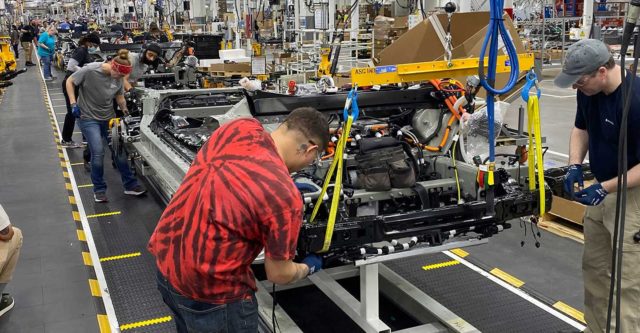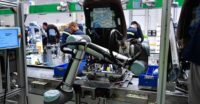According to an old saying, “what goes up must come down.” Unfortunately, that’s not true for either a helium-filled balloon or helium used in leak testing applications.
Since January 2022, there’s been a worldwide shortage of helium. The war in Ukraine has cut off supply of helium from Russia, a leading exporter of the gas. Four of the world’s five largest major helium suppliers were forced to ration the gas for their customers, including manufacturers that rely on it to check for leaks in appliances, auto parts, medical devices and other products.
Assemblers have been forced to either bite the bullet and pay more for helium, or find alternatives.
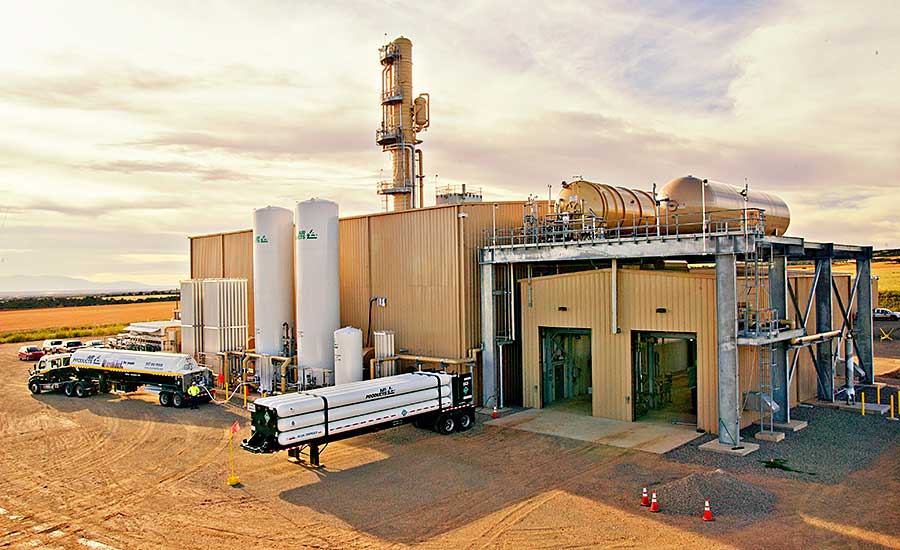
Helium Is Popular
Helium is an inert gas that is popular for a variety of analytical, cryogenic, heat transfer, lifting, leak detection and shielding applications. The largest industrial users of helium are hospitals, where the extremely low temperature of liquid helium is used to maintain the superconducting properties of magnets in MRI equipment. It’s also used as a coolant to transfer heat effectively, thanks to its high thermal conductivity, in the fiber optics and electronics industries.
Those applications account for approximately 40 percent of the market. Party balloons comprise another 15 percent, while leak testing only represents about 5 percent of helium usage.
Hard vacuum helium leak testing is the most accurate and efficient of all tracer gas leak detection systems and is used to test parts with extremely small leak rates. It provides better repeatability than other tracer gas leak detection methods, offers shorter cycle times, and is less susceptible to temperature and other external environmental factors. Other benefits include fast cycle time and high repeatability.
Vacuum helium leak tests can be performed using an “inside-out” or “outside-in” method. Both methods provide similar benefits, but the inside-out hard vacuum test can provide a higher level of sensitivity and has a reduced chance of human error since the testing process is automated. It also requires more equipment than an outside-in method performed by an operator.
“Helium is always going to be necessary for certain types of tests,” says Gordon Splete, global product manager at Cincinnati Test Systems Inc. “There’s more demand for helium today, because leak rates are going down in many applications.
“The biggest benefit of using helium is that it’s a nonreactive gas, so it doesn’t get outgassed by any other process,” explains Splete. “That makes it easier to control than other types of gases.”
Aside from the price of the gas itself, helium leak testing is typically more expensive than other types of methods, such as pressure decay. That’s because there’s more hardware required and the sensors are more complex. But, that doesn’t distract some manufacturers.
“We have been experiencing a regular demand for helium leak detection equipment as different industries introduce new products that have more stringent testing specifications or are replacing older leak detectors that have reached the end of their operating life,” says Chris Olsen, director of engineering at Vacuum Instrument Corp. (VIC). “The products and industries that use helium as a tracer gas for leak testing are limitless.”
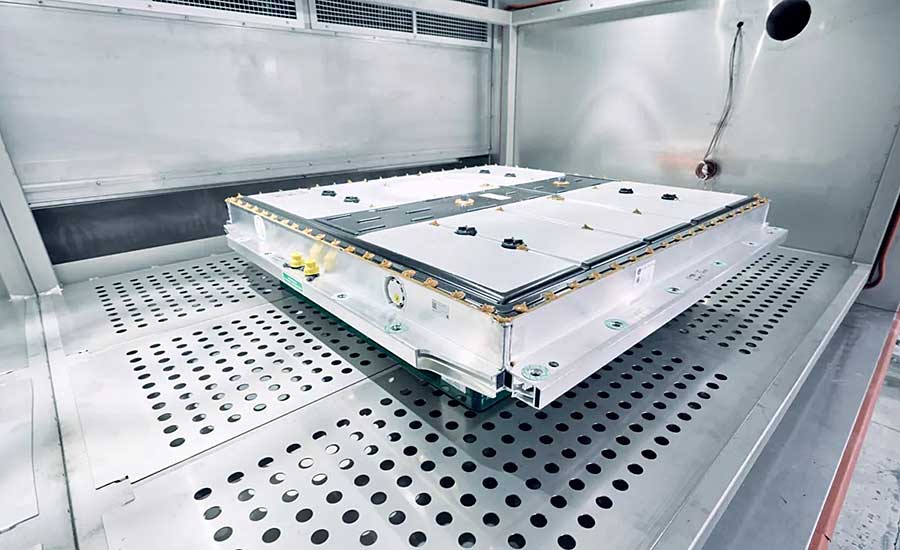
It’s used by medical device manufacturers to test implantable devices such as pacemakers. Aerospace manufacturers use helium to test electronic switches and high-pressure pneumatic components.
The appliance industry uses helium to test accumulators, coils, compressors, expansion valves and other components inside air conditioners, refrigerators and commercial refrigeration equipment.
“Any product that’s charged with refrigerants must be stringently tested for leaks, and helium is the go-to choice,” notes Thomas Parker, North American automotive market sales manager at Inficon Inc.
Traditionally, helium has been widely used in the automotive industry to test fuel system components, such as fuel injectors, fuel rails and gas tanks, in addition to air bags, aluminum wheels and radiators.
“We are seeing more demand for helium today from automakers and suppliers,” says Parker. “It’s primarily driven by electric vehicles. We do a lot of business with manufacturers that use helium to leak test cylindrical battery cells and thermal management components. It’s also popular for testing the trays and lids used in battery enclosures.”
According to Parker, battery packs are so large that it’s hard to test them at a low leak rate with air or tracer gas. Battery cooling systems, such as heat pumps and cooling plates, are another growing application for helium leak testing.
“With the shift to electric vehicles, leak testing demand for new components is increasing dramatically,” adds Hideki Matsuura, general manager of the factory automation division of Yamaha Fine Technologies Co. “One of the hottest applications today involves lithium-ion batteries. Environmental demands for zero pollution leaks is also driving [growing interest in leak testing].”
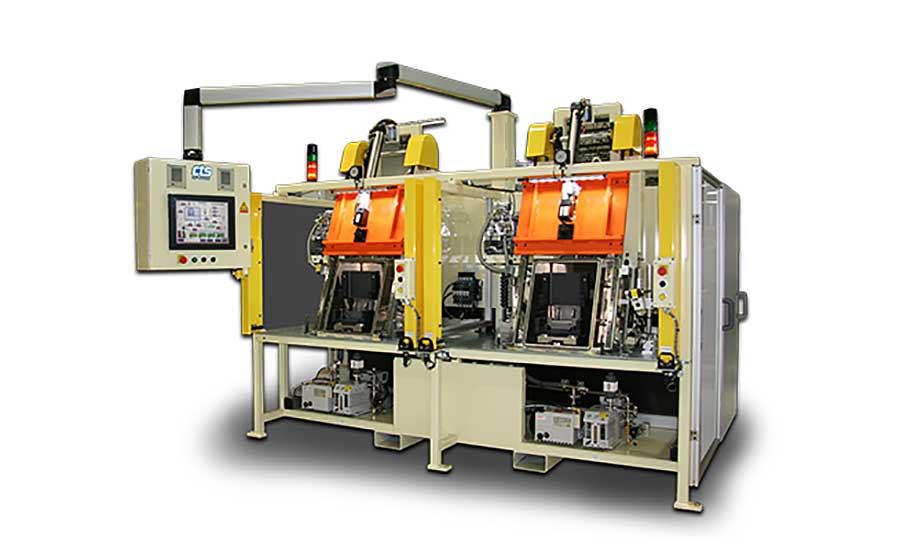
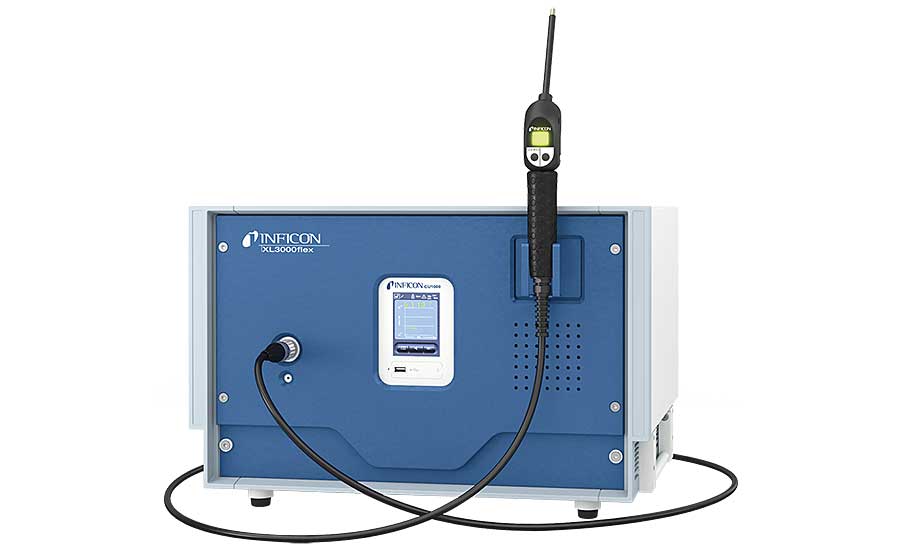
Supply and Demand
Helium is found during the extraction of natural gas deposits. Unfortunately, a limited amount of helium is available worldwide and the market is tightly controlled by a handful of industrial gas suppliers, including Airgas, Air Products, Linde and Matheson. It’s a classic case of supply and demand economics.
“There’s a lot of frustration among helium users today, because this is ’helium shortage 4.0,’” says Phil Kornbluth, president of Kornbluth Helium Consulting. “Prices have gone up quite dramatically over the last 16 months, and they’re at levels we haven’t seen before.”
Since 2006, there have been four shortages. “Every four or five years, a ‘perfect storm’ type of scenario seems to hit the helium supply industry,” laments Parker. “One time, there weren’t enough tube trailers to move the helium around. Another time, a natural gas facility in Wyoming experienced a bunch of down time.”
“The price of helium has gone up more than 10 times over the last two decades,” adds Kornbluth. “The price of helium at the source increased an average of 11 percent annually from 2006 to 2022.
“Most of these shortages have been due to supply failure as opposed to demand growth,” claims Kornbluth. “The latest price increase is because major helium suppliers have been rationing supply due to the war in Ukraine.
“A recent Gazprom project in Siberia, which was supposed to turn the shortages into oversupply, has been delayed because of the war, causing a lot of uncertainty in the market,” explains Kornbluth. “Another large helium project underway in Qatar, due to come online in a few years, should cure the shortage. That will definitely lead to an oversupply of helium.”
Ironically, the United States is home to the largest helium deposits in the world. The U.S. Bureau of Land Management operates a federal stockpile near Amarillo, TX, and a pipeline system that delivers crude helium feed gas to four privately owned plants in Kansas and Oklahoma.
“A decade ago, many manufacturers were paying about $0.25 for a standard cubic foot of helium,” says Parker. “Five years ago, it was anywhere from $0.50 to $0.75 for the same equivalent. Helium usage dropped during the COVID-19 pandemic, but it’s now going back up. It’s similar to the way that gasoline prices ebb and flow.
“During these previous shortages, some manufacturers turned to other types of gases that fit their leak testing application,” Parker points out. “But, others have found that helium is the only solution, so they magically find a way to stick with it by finding alternative suppliers or renegotiating contracts to find more favorable pricing.”
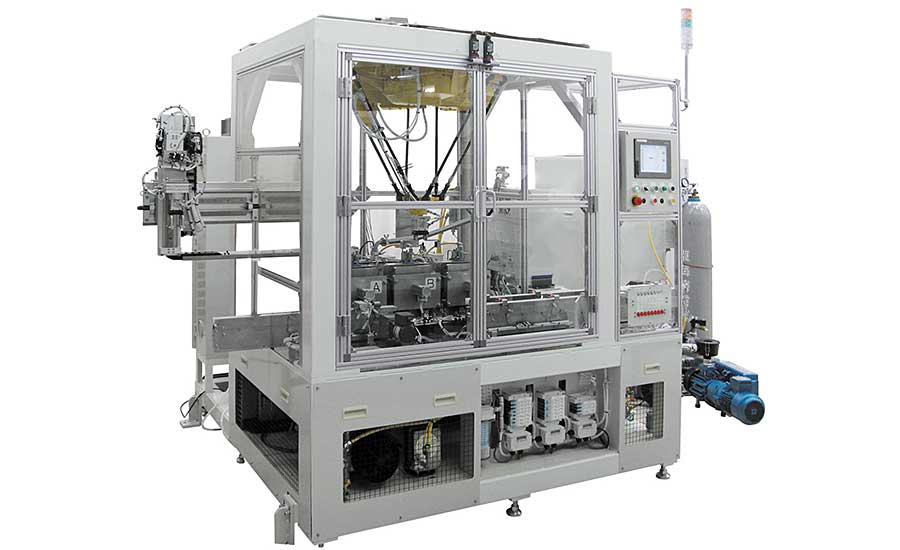
Helium Alternatives
According to Parker, hydrogen forming gas, which is a mix of 95 percent nitrogen and 5 percent hydrogen, is a good alternative to helium for leak testing applications.
“It costs less than helium, but you give up some sensitivity,” warns Parker. “For instance, you won’t be able to find as small a leak as you could using helium.
“Another drawback to be aware of is the fact that there are many other sources of hydrogen in factories that can activate any leak detector,” says Parker. “For instance, it could be a propane-powered forklift truck. On the other hand, nothing else smells like helium. A helium leak detector will only sense helium.
“We’ve done some major projects with large HVAC manufacturers that have moved from helium to hydrogen forming gas,” notes Parker. “Some of those customers were more concerned about the long-term supply of helium than current price fluctuations.
“Some engineers mistakenly believe that they can switch from helium to hydrogen without any consequences,” explains Parker. “It’s important to realize that while there are alternatives to helium, it’s not a plug-and-play solution.
“If you switch from helium, there are tradeoffs and you’re going to give something up, such as sensitivity,” claims Parker. “If you give up sensitivity in a pre-test, you have to do a better job sniffing for leaks in a final test.
“Today, many engineers are looking for flexibility in their leak testing systems,” adds Parker. “They want the option to use either helium or hydrogen forming gas with either a high- or slow-flow, depending on the application. That’s why we developed the XL3000flex.”
Parker says it’s the first device to detect leaks with forming gas as accurately as with helium. The XL3000flex allows users to choose the lowest-cost or easiest-to-source test gas available.
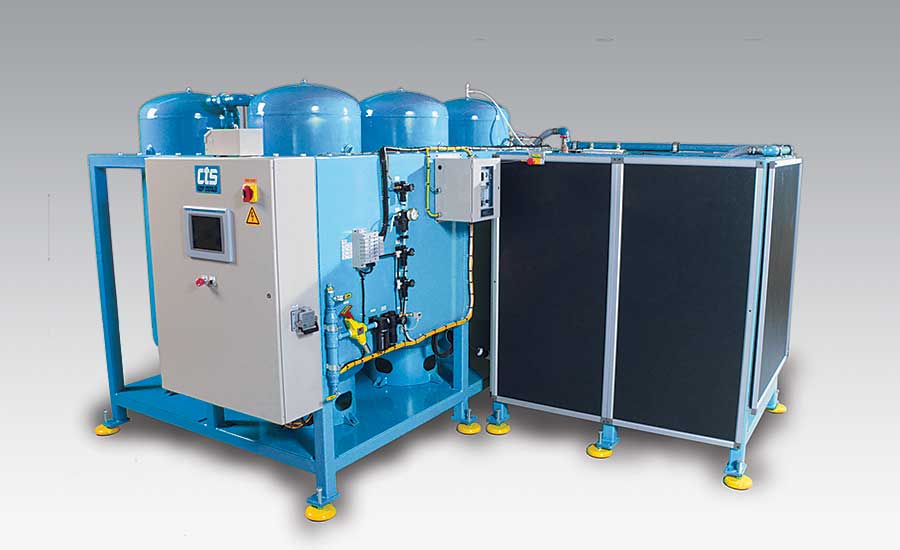
“The recent helium situation has forced some of our customers to look for and evaluate alternatives,” says Jacques Hoffmann, president of InterTech Development Co. “We see more customers today looking for dry air testing, instead of helium, whenever possible. We’ve seen some manufacturers that were on edge about rising costs make the shift.
“In addition to supply chain issues, there are maintenance issues associated with helium testing,” claims Hoffmann. “Dry air testing can often give you a reliable, lower-cost alternative. Sometimes, you can test even faster with air than with helium, due to cycle times.
“Helium isn’t going away, but the technology behind other leak testing methods has advanced,” notes Hoffmann. “That has enabled some manufacturers to use lower leak rates and to reliably test larger volume parts.”
In fact, InterTech recently developed proprietary technology that allows automotive manufacturers to test large-volume battery enclosures.
Hoffman says 100 percent helium is not always necessary to ensure accurate leak test results. “Many of our customers use a percentage gas to save costs on tracer gas,” he points out. “Whatever percentage they are reducing to, that simply changes the sensitivity of the system by the same amount.
“If the leak rate is large enough that we can still accurately capture it using a percentage of the tracer gas, then it makes sense to do this,” claims Hoffmann. “For example, if their reject leak rate was 8 x 10-5 atmcc/sec, and we can easily discern leaks in the high 10-6 range, then going to a 10 percent mix would lower the reject limit to 8 x 10-6 atmcc/sec. The system will still find their leaks reliably, and they would save up to 90 percent of their tracer gas expense.”
“We have been contacted by manufacturers to review existing and new leak testing applications to determine suitability using an alternative tracer gas to helium, such as argon and hydrogen,” adds VIC’s Olsen. “Helium offers the capability to perform leak testing at detection levels that are up to 100,000 times more sensitive than what can be measured using other alternative tracer gases.
“Some alternative tracer gases, such as hydrogen, require a reduced concentration of 5 percent due to the flammability of the gas,” explains Olsen. “The 5 percent hydrogen concentration reduces the allowable reject level by 95 percent.
“In many applications, the new allowable reject level is outside the detection capability of the leak detector and is not suitable,” warns Olsen. “We have also been contacted about lowering the helium percentage of tracer gas used, and utilizing helium recovery systems.”
Helium Recycling
Helium recovery systems provide an alternative for some manufacturers looking to control costs. However, they aren’t cheap and often require a lot of maintenance.
“All industries are looking for helium recovery systems, if they can afford the return on investment,” says Cincinnati Test Systems’ Splete. “They consist of several key components, such as a hard recovery tank or a collapsible bag. From there, all the helium gets filtered, goes through a compressor and gets sent back to a primary tank that contains a gas analyzer to measure the concentration of helium.
“Up to about 95 percent of helium can be reliably recovered,” claims Jeff McBee, global market specialist for HVAC-R at Cincinnati Test Systems. “As a rule of thumb, the higher your test pressure, the better your recovery efficiency will be.
“With lower test pressures, helium recovery rates will be smaller,” McBee points out. “The vacuum pressure used before backfilling with helium can also affect efficiency rates. Typically, recovery systems that use higher pressure are less expensive and a little easier to maintain.”
“Using a recovery system saves a lot of helium, because it creates an almost closed loop helium recirculation and re-use loop,” adds VIC’s Olsen. “The only additional helium needed is to make up for leaks, volumetric loses and dilution.
“However, engineers need to ensure that all lines are leak tight and that the process control allows enough time for part pre-evacuation to limit the amount of dilution,” explains Olsen. “You also need to allow ample time to vent and recover the helium returning back to the system.”
“Helium recovery typically makes sense for engineers who have high-volume, low-variation parts,” argues Inficon’s Parker. “If you’re mass-producing household refrigerators, for instance, helium recovery makes a lot of sense. But, if you’re making a wide mix of products on your assembly line, it probably doesn’t make sense for most applications.”
According to Kornbluth, most leak detection applications do not require high purity helium. “While standard commercial-grade helium has 99.9 percent purity, lower purity helium offers 98 percent or 99 percent purity,” he points out.
“There are a number of start-up companies producing helium in that range, so that might be an option for some manufacturers to consider,” says Kornbluth. “The list includes companies such as North American Helium in Canada. Others that are close to starting production include Blue Star Helium, Desert Mount Energy, Navajo Transitional Energy Co. and Royal Helium.”
ASSEMBLY ONLINE
For more information on leak testing visit www.assemblymag.com to read these articles:
